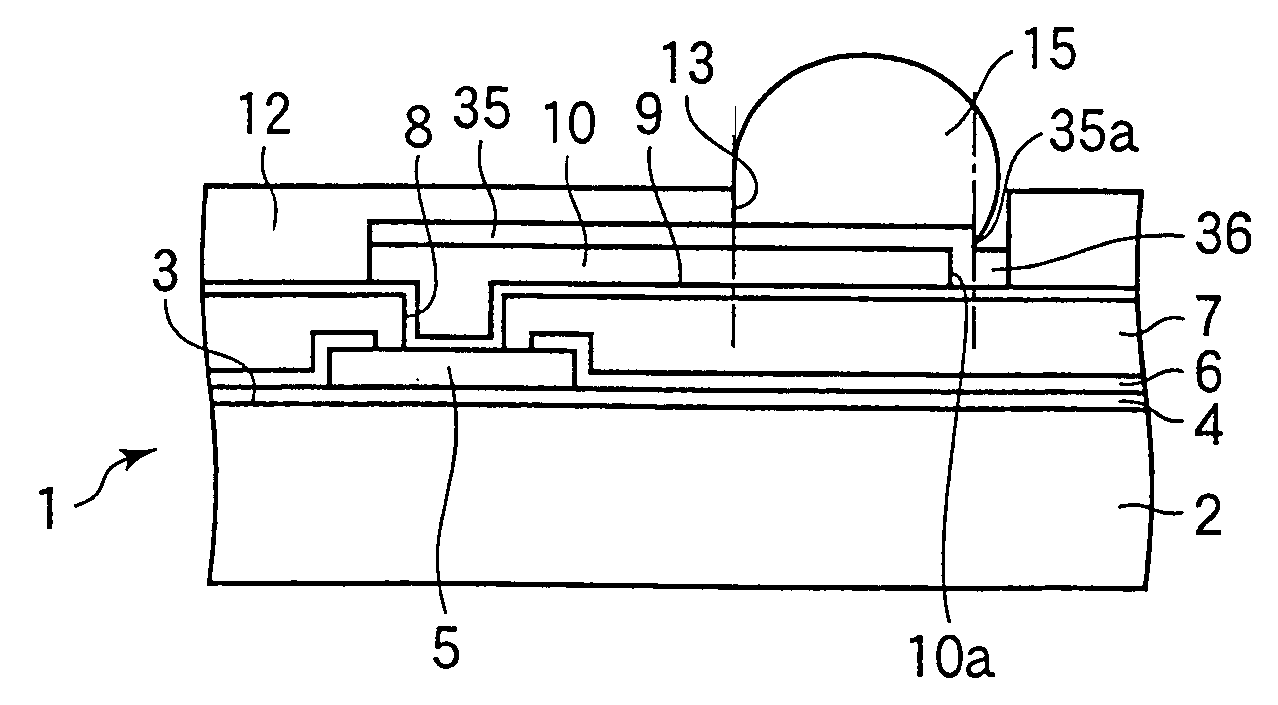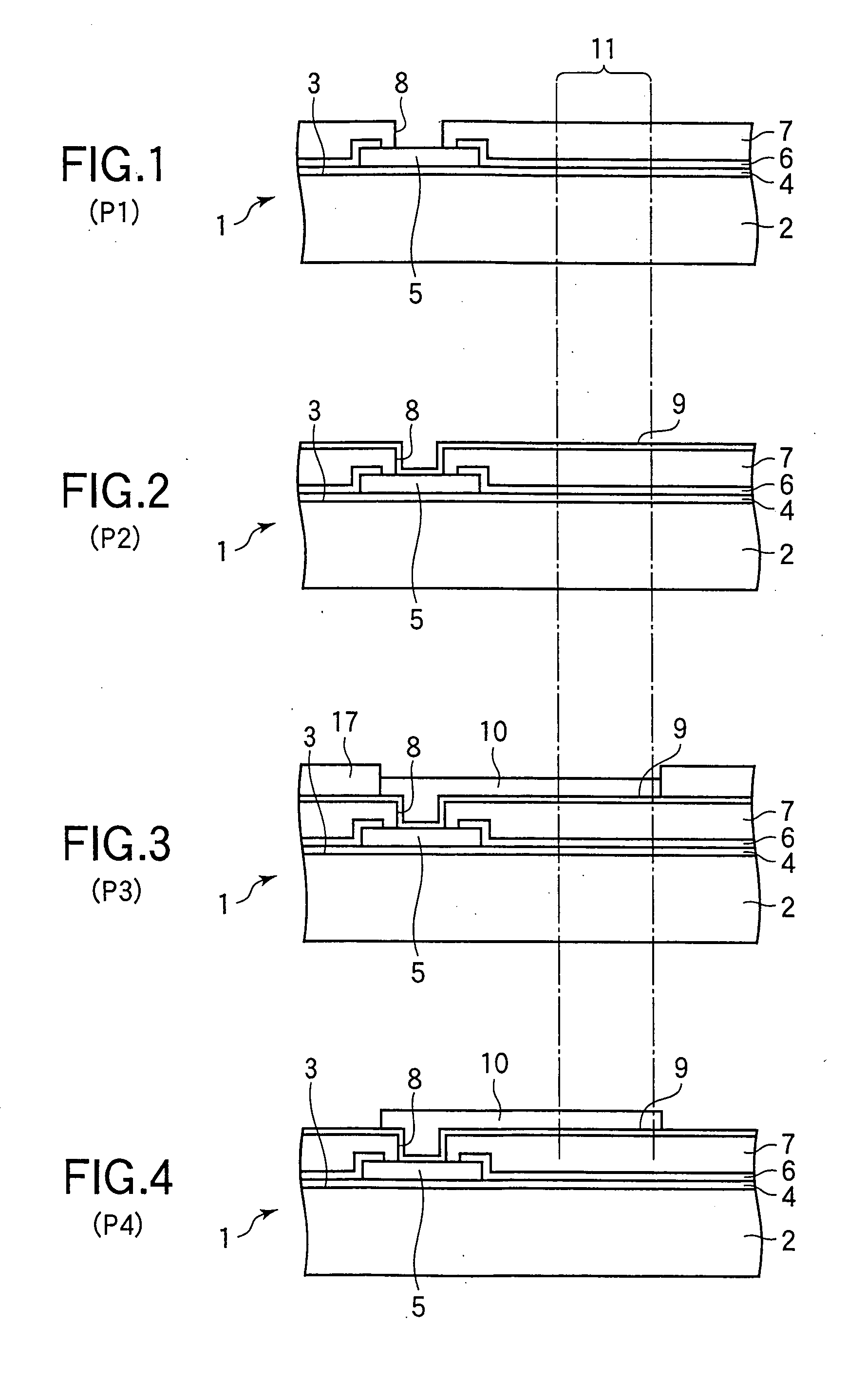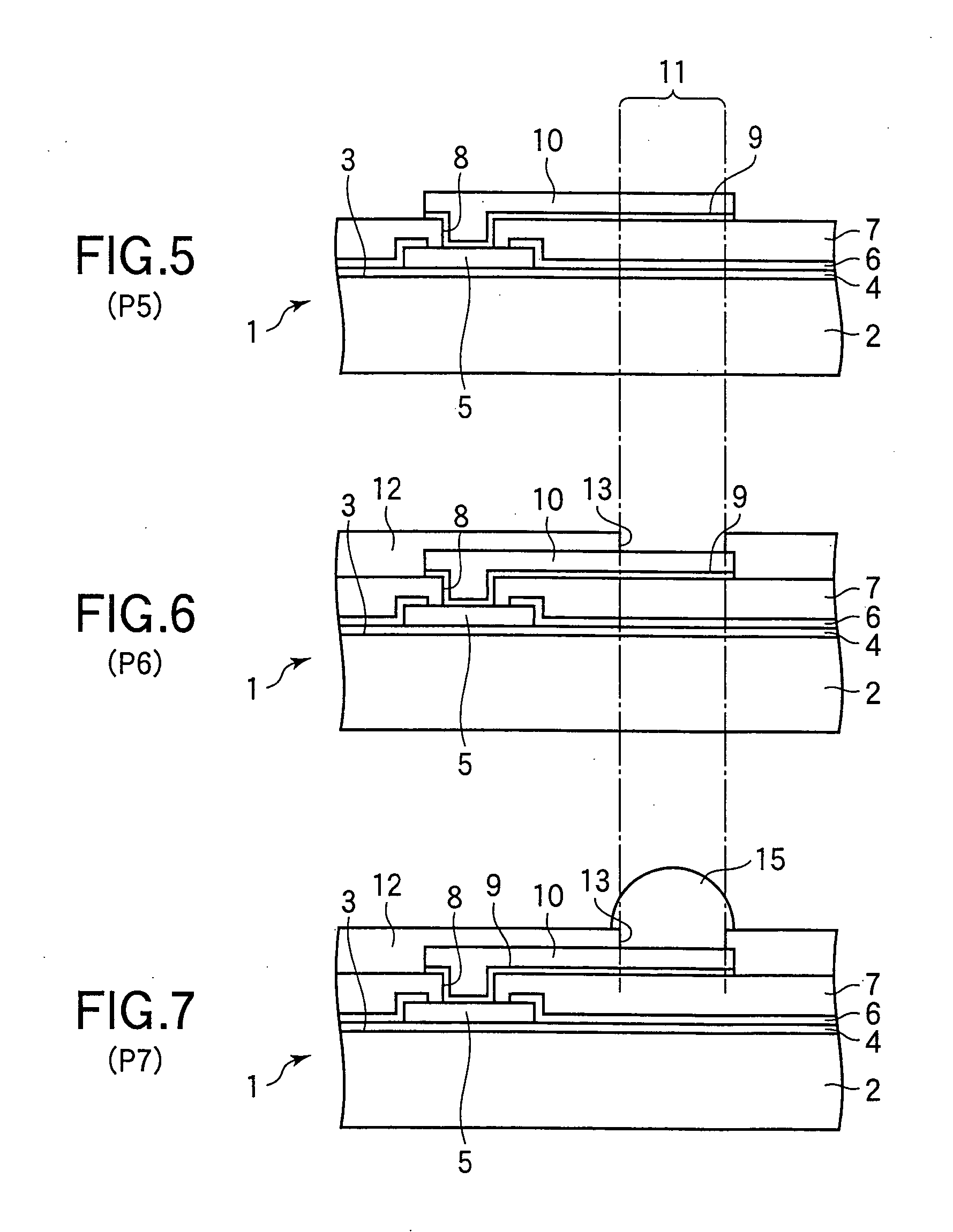Semiconductor device and fabrication method thereof
a semiconductor device and semiconductor technology, applied in semiconductor devices, semiconductor/solid-state device details, electrical devices, etc., can solve the problems of occupying a large amount of total thickness (e.g., 30%) of the semiconductor device, and the resin layer is nearly as thick, so as to simplify the formation of the opening and the thickness of the protective layer
- Summary
- Abstract
- Description
- Claims
- Application Information
AI Technical Summary
Benefits of technology
Problems solved by technology
Method used
Image
Examples
first embodiment
[0022] The first embodiment is a semiconductor device fabricated from a wafer 1 as illustrated in FIGS. 1 to 7.
[0023] The semiconductor wafer 1 includes a semiconductor substrate 2 having a front surface (the first surface, the upper surface in the drawings) and a back surface (the second surface, the lower surface in the drawings). The front surface is also referred to as the circuit surface 3, because it includes a plurality of interconnected circuit elements such as transistors (not shown). The circuit surface 3 is covered by a dielectric layer 4 of silicon dioxide with openings referred to as contact holes (not shown) leading to circuit elements on the circuit surface 3. The surface of the dielectric layer 4 is covered with a conductive metal film such as an aluminum film (not shown). The metal is patterned to form interconnection wiring (not shown) that is electrically coupled to the circuitry on the circuit surface 3 through the contact holes.
[0024] Patterning of the conduct...
second embodiment
[0043] The second embodiment is a semiconductor device fabricated from a wafer 1 as illustrated in FIGS. 8 to 15.
[0044] The second embodiment differs from the first embodiment by including conductive nubs referred to below as redistribution nubs 21, seen in FIGS. 12 to 15. The redistribution nubs 21 are cylindrical projections of the same material as the redistribution-pattern 10, and are formed in the electrode areas 11, making direct electrical contact with the redistribution pattern 10.
[0045] A fabrication method for the semiconductor device in the second embodiment includes the steps PA1 to PA8 illustrated in FIGS. 8 to 15.
[0046] Since steps PA1 to PA4 in FIGS. 8.to 11 are the same as steps P1 to P4 in FIGS. 1 to 4 in the first embodiment, descriptions will be omitted.
[0047] In step PA5 in FIG. 12, a second photoresist mask 17 is formed (this photoresist mask is different from the photoresist mask used in step PA3 in FIG. 10). The second photoresist mask 17 covers all parts ...
third embodiment
[0056] The third embodiment is a semiconductor device fabricated from a wafer 1 as illustrated in FIGS. 16 to 25.
[0057] The third embodiment differs from the first embodiment by including a second metal underlayer 23 and conductive redistribution nubs 24. In FIG. 22, the second metal underlayer 23 is deposited as a multilayer film on the entire front surface of the protective layer 12 by sputtering, as was the metal underlayer 9 in the first embodiment, and is patterned by etching to cover the edges of the electrode openings 13 in the protective layer 12, the exposed parts of redistribution pattern 10 at the bottom of the electrode openings 13, and the inner walls of the electrode openings 13.
[0058] The conductive redistribution nubs 24 are generally cylindrical projections of the same material as the redistribution pattern 10. The conductive redistribution nubs 24 have large-diameter and small-diameter parts, and are formed on the electrode areas 11, making direct electrical cont...
PUM
| Property | Measurement | Unit |
|---|---|---|
| height | aaaaa | aaaaa |
| diameter | aaaaa | aaaaa |
| thick | aaaaa | aaaaa |
Abstract
Description
Claims
Application Information
 Login to View More
Login to View More - R&D
- Intellectual Property
- Life Sciences
- Materials
- Tech Scout
- Unparalleled Data Quality
- Higher Quality Content
- 60% Fewer Hallucinations
Browse by: Latest US Patents, China's latest patents, Technical Efficacy Thesaurus, Application Domain, Technology Topic, Popular Technical Reports.
© 2025 PatSnap. All rights reserved.Legal|Privacy policy|Modern Slavery Act Transparency Statement|Sitemap|About US| Contact US: help@patsnap.com



